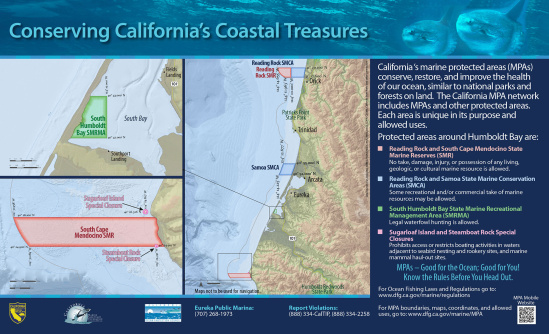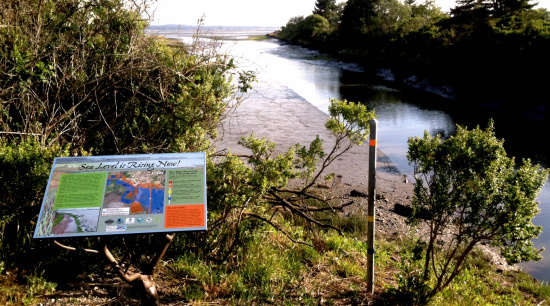A live under-the-sea webcam for your enjoyment
Eat Humboldt
Most seafood Americans eat is imported.
Most seafood Americans catch is exported.
This equation is a problem. U.S. fisheries are among the best-managed in the world, but here we are, consuming a significant amount of wild fish caught via illegal or unreported fishing. In addition to this continued exploitation of declining species, by eating imported seafood, we’re contributing to slave labor in Thailand, consuming fish we can’t even be sure is properly labeled and contributing to the decline of local fish markets throughout the country.
Paul Greenberg, author of the 2014 book American Catch: The Fight for Our Local Seafood, therefore advises the following “Three Simple Rules for Eating Seafood“:
- Eat American seafood.
- A much greater variety than we currently do.
- Mostly farmed filter feeders.
See where we’re going with this? Exactly. Here in Humboldt, not only do we have a variety of delicious and sustainable fish right off our shores, but we have a thriving aquaculture scene that enables us to do exactly what Greenberg suggests: Eat more oysters.
Perfect timing, given that Arcata’s annual celebration of the bivalve manifests this Saturday – and you can tune into Coastal Currents today on KHUM at noon, when Coast Seafoods’ Greg Dale joins yours truly and Mike Dronkers to expound more on the goodness of oysters and the wonder of Oyster Fest.
Flying Fish + Surfrider
In other healthy, local ocean news – Humboldt Surfrider has been advocating for clean water, litter-free beaches, protection of cherished breaks and unfettered public access to the coast since 1984. Membership matters – which is why Surfrider is holding a membership drive this week.
- Today, 1- 3 p.m.: Stop by Flying Fish Boardshop (across the street from Red Lion Hotel in Eureka).
- Saturday: Pop over from Oyster Fest to The Shop (8th Street across from the Co-op) from 11 a.m. to 5 p.m.
- Sunday: Celebrate Father’s Day with Surf’s Up at Ocean Night, Arcata Theatre Lounge, 6:30 p.m.
Toxic Algae: ‘some of the highest concentrations ever observed’
With our rivers running low this year, blue-green algae is of even more concern than usual, as a KIEM report noted earlier this week. Meanwhile, NOAA Fisheries issued a release detailing why extra scientists have been recruited to chart an extensive harmful algal bloom that’s triggered numerous closures of important shellfish fisheries in Washington, Oregon and California:
“The bloom stretches from the Central California Coast north to Washington and possibly Alaska, and involves some of the highest concentrations of the natural toxin domoic acid ever observed in Monterey Bay and off the Central Oregon Coast. In early June elevated toxin levels led shellfish managers to close the southern Washington Coast to Dungeness crab fishing, the largest-ever closure of Washington’s multi-million-dollar crab fishery.” Full release here.
Signs of the times
You may have noticed some of the new Marine Protected Area interpretive signs along the North Coast already. They’re being placed in harbors and at boat ramps and other access points near MPAs throughout the state, including our region, which spans from the Oregon border to Alder Creek.
The signs should help keep people aware of the regulations – where to fish and where not to – making it easier to avoid tickets, fines and the bad feeling that would come from doing something wrong.
For more on current fishing rules, visit the Department of Fish & Wildlife and for more details on where to fish and where not to, there’s the excellent Fishing the North Coast.
Finally, the City of Arcata has some spiffy new Sea Level Rise signs courtesy of a partnership with NEC’s “Clean Beaches, Healthy Communities” program and a Coastal Commission Whale Tail grant – note the line on the pole and plan accordingly.


CLICK TO MANAGE